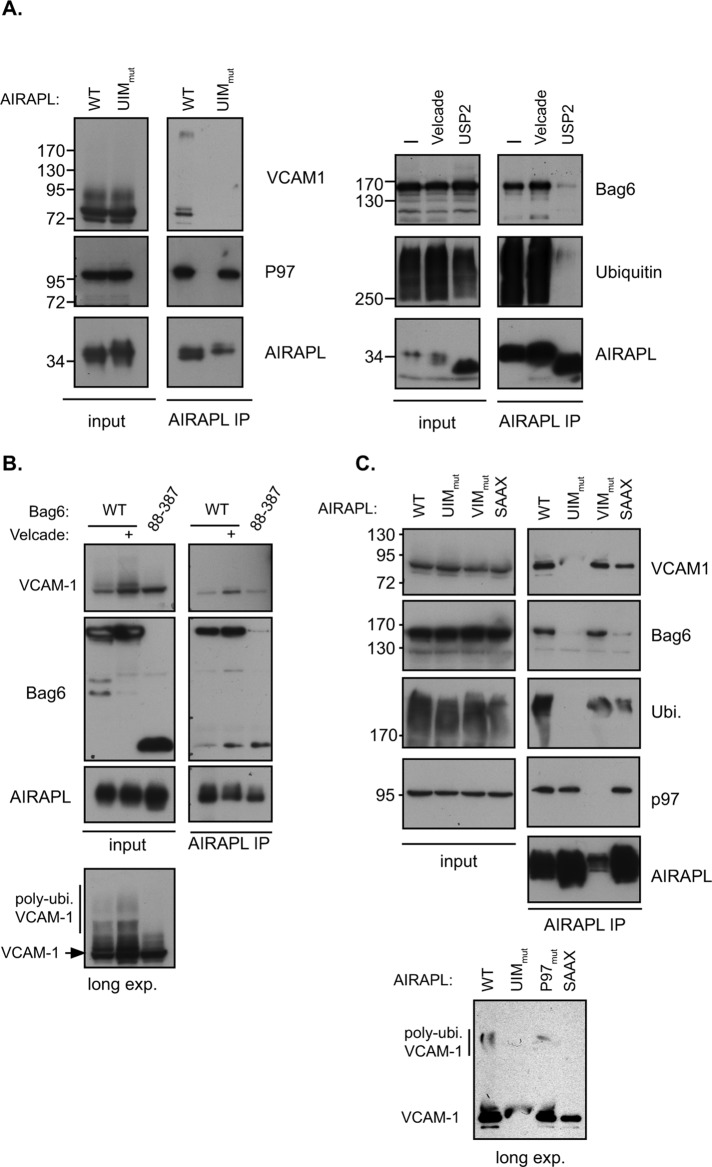FIGURE 3:
(A) Left, cellular lysates of CAM741- and Velcade-treated cells expressing VCAM-1 and AIRAPL WT or UIM mutant were subjected to an AIRAPL IP. Copurification of VCAM-1 is observed to be UIM dependent, whereas p97 copurification is not UIM dependent. Right, AIRAPL IP was performed from cellular lysates of cells treated with Velcade or usp2 as indicated. Bag6 and ubiquitin copurification was evaluated by the indicated immunoblots. (B) Cells expressing AIRAPL and the indicated Bag6 were treated with CAM741 with or without Velcade (as indicated), and cellular lysates were subjected to an AIRAPL IP. Copurification of Bag6 and VCAM-1 was evaluated by immunoblots, and increased levels of VCAM-1 upon Bag6 88–387 expression are noted (input). Note the reactive band at the size of the Bag6 mutant that appears even in the absence of Bag6 mutant expression, indicating a nonspecific or partial Bag6 product expressed at this molecular weight. Nevertheless, the reduced amount of Bag6 mutant copurified upon AIRAPL IP (compare to WT) implies a role for additional Bag6-mediated processes in AIRAPL binding. Long exposures of cellular input content reveal the reduced levels of HMW VCAM-1 upon Bag6 mutant expression. (C) Cells treated with CAM741 and Velcade expressing the indicated AIRAPL isoform were subjected to an AIRAPL IP, and VCAM-1, Bag6, ubiquitin, and p97 interaction was evaluated. Longer exposure of VCAM-1 content in the AIRAPL IP reveals the presence of a HMW VCAM-1 isoform in the WT and VIM mutants of AIRAPL (bottom, long exp.).

